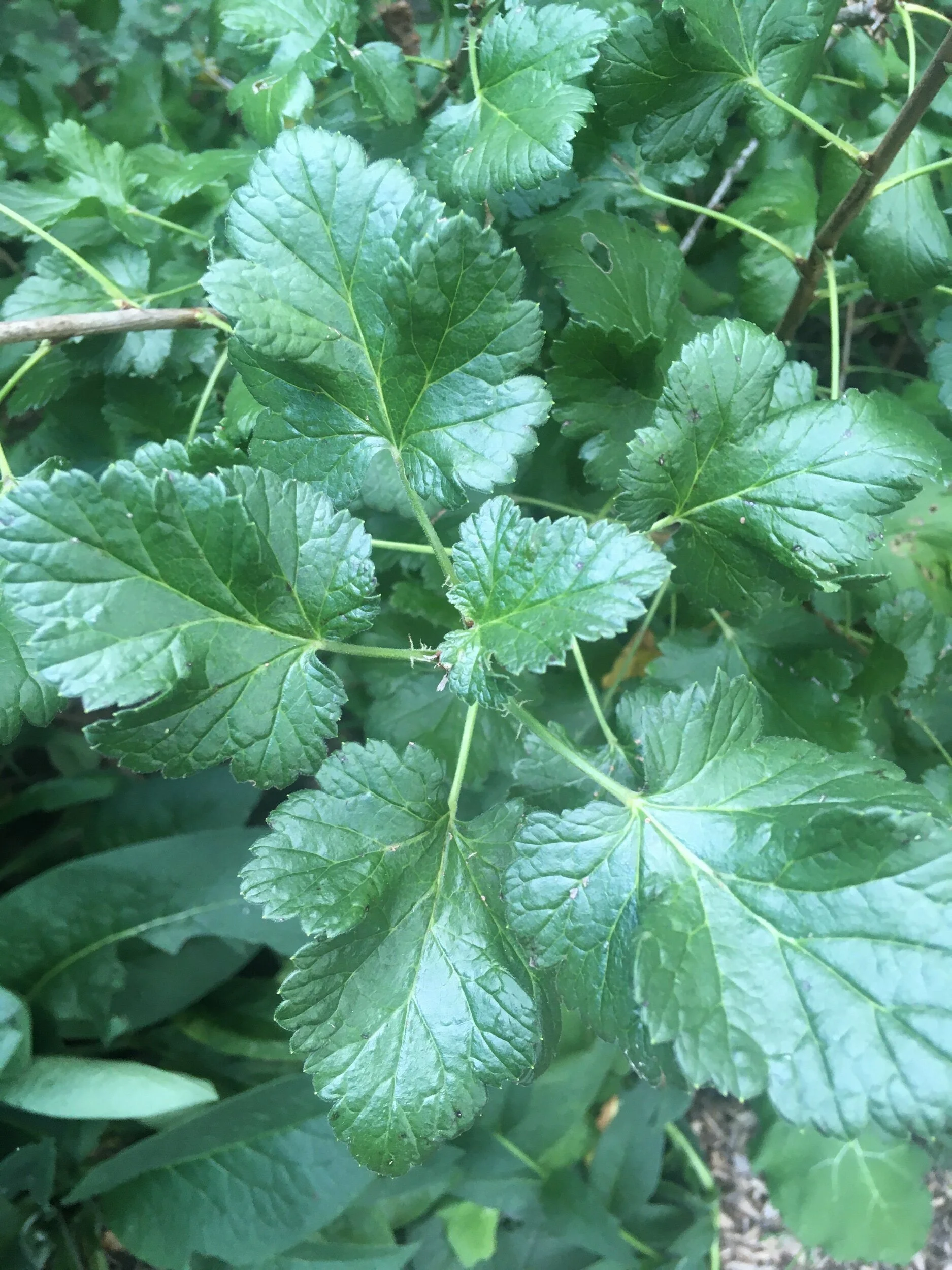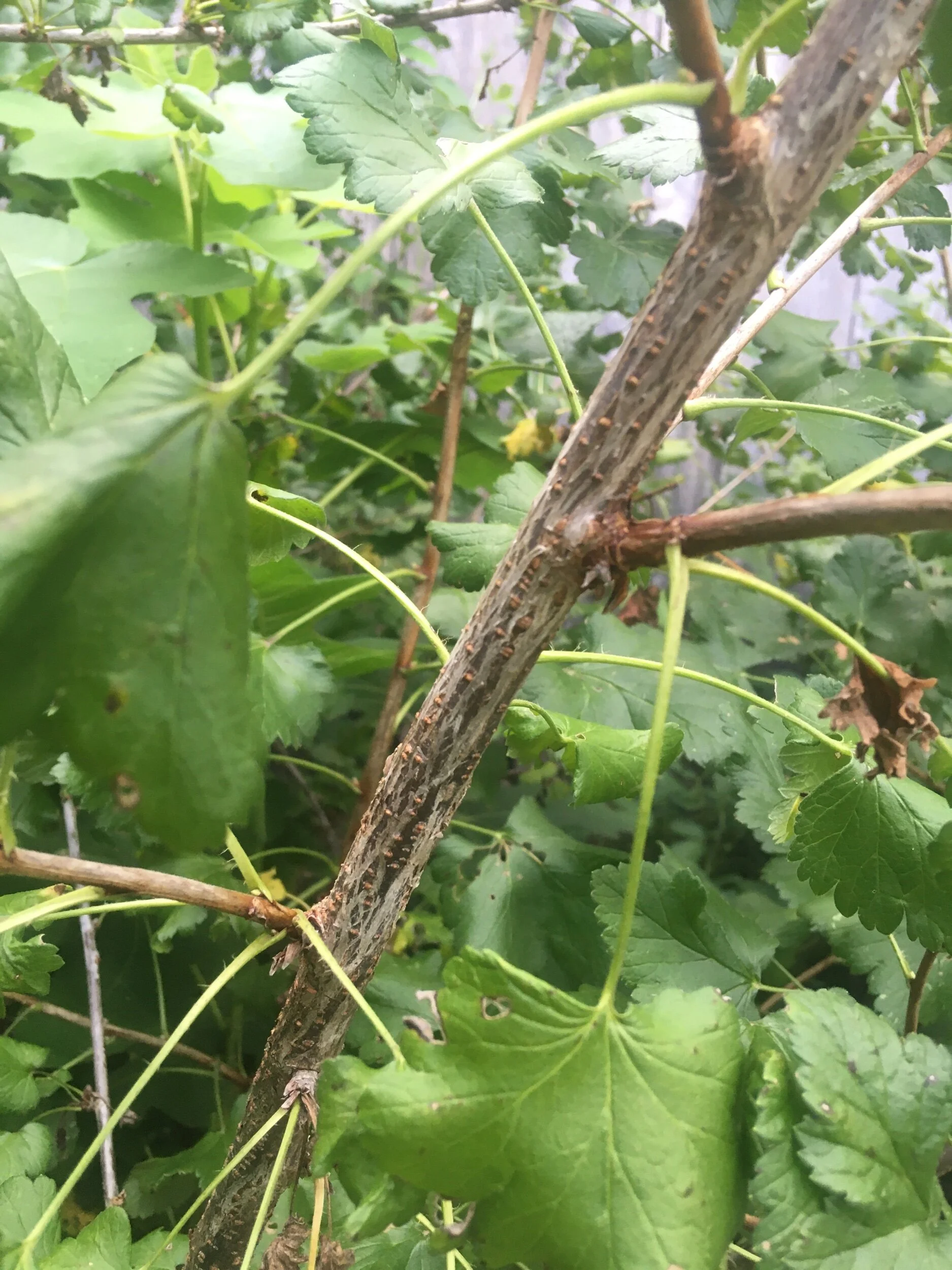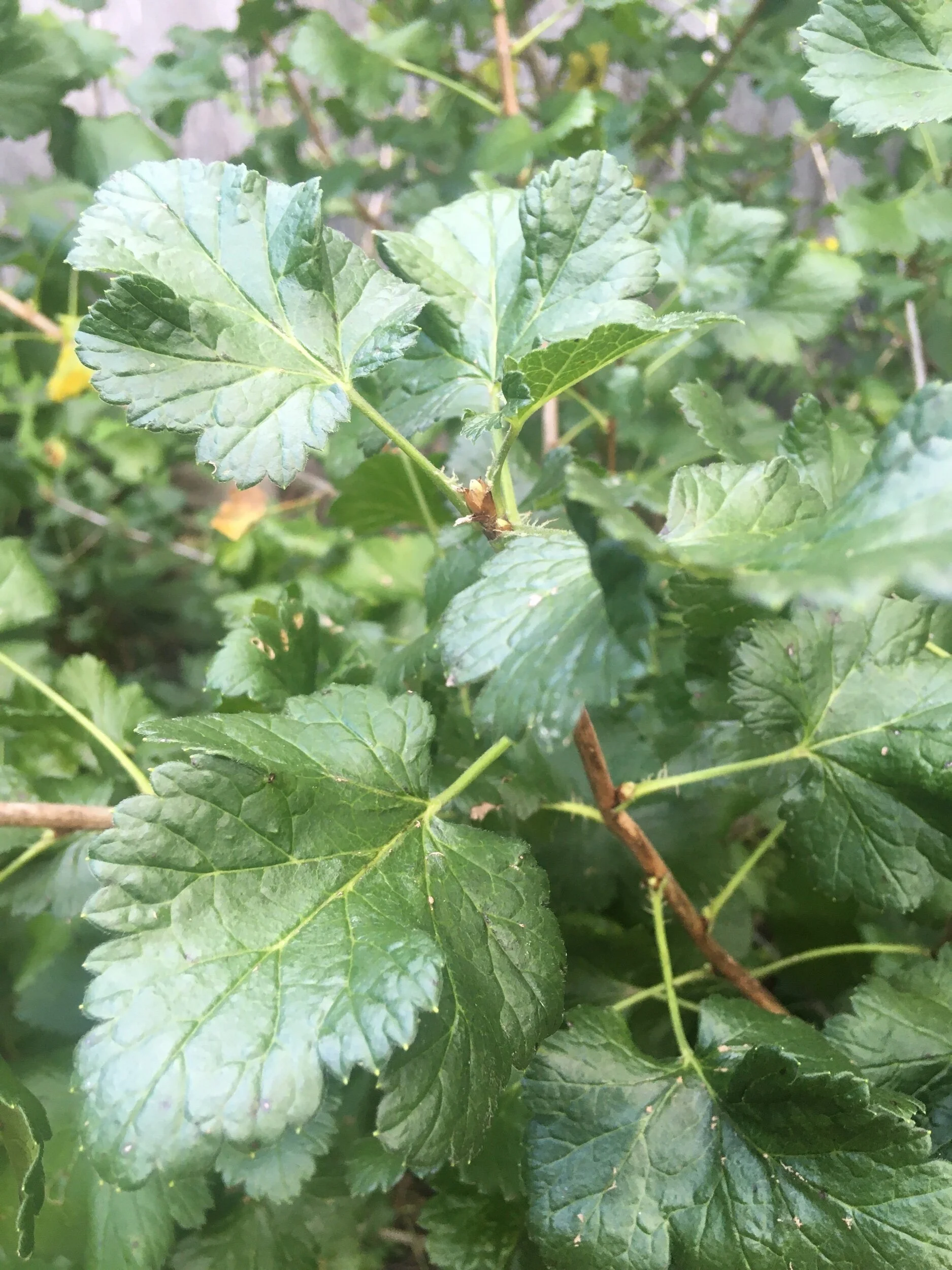Jostaberry



Jostaberry
Ribes x nidigrolaria
Plant for the thornless stems, for the easy propagation, and for the complex Goose-Currant hybrid!
Each order is a Bundle of 5 cuttings.
Hardy from Zones 3-8. 4-7 feet tall, similar spread unless pruned. Self-fertile
We stuck a few Jostaberry along a south-facing barn wall, right between Figs and underneath Peaches. In a few growing seasons they’ve stretched themselves out to fill in all available openings. They love the warm microclimate! Josta can take some shade thrown their way, but they really shine in the bright sun.
Some websites refer to Josta as a cross between Currant and Gooseberry, but they’re really more of a complex hybrid of three plants: Black Currant, European Gooseberry, and a Native American Black Gooseberry from the West Coast. The history is a pretty fascinating example of intricate genetic plant breeding.
In the 19th century, Gooseberry got famous in European and American garden clubs, especially in England. The search was on for a Goosey fruit with thornless stems, so Yorkshire breeder William Culverwell took a crack at it in 1880 with Black Currant and European Goose, but the results were mostly sterile. German plant breeders really took it on, in particular Rudolph Bauer, who built on earlier work of Paul Lorenz in Berlin. The process took a little while, and changed locations, in the global catastrophe of two world wars. The genetic details get a little complicated, but basically Bauer swabbed growing tips with colchicine cream, a plant-derived anti-inflammatory medicine widely used in plant breeding. Colchicine induces polyploidy (when organism cells have more than one pair of chromosomes) by doubling the number of chromosomes, which is already a pretty common trait in plants. The reason why is because polyploidy produces bigger quicker hardier plants than the parents. A pretty similar breeding process produces seedless watermelons. Bauer backcrossed the result with Goose and Currant parents around 15,000 times, finally selecting three for vigorous growth, disease resistance, and fertile production!
That means that Jostaberry is a hybrid of two different first-generation crosses: one between a cultivar Black Currant and a West Coast Gooseberry for Gooseberry mildew resistance, and another cross between a different Black currant cultivar and a European Gooseberry cultivar. The name is a hybrid too, from the German words for Black Currant and Gooseberry. and in keeping with its origins is usually pronounced Yostaberry. Bauer and team introduced the first cultivar in 1977, but since then multiple cultivars have gotten jumbled together and confused in plant sales, so it can be hard to sort out which is which.
The leaves bear a striking resemblance to their Goose lineage, and the lustrous black fruit tastes like their entire family tree, or shrub. A little more Goose when unripe, a little more Black Currant when ripe. Yellow flowers bloom in April and May, pollinated by insects with half-inch fruit ripening by July. They can hang on the stems for quite a while, which helps forgetful or busy harvesters. Seems more suited to forest gardens and backyards than large-scale plantings. Like other Ribes, Jostaberries are very rich in Vitamin C, and the juice has antifungal properties. You can use them very similarly to Black Currant recipes. The plants are a little slower to fruit from cuttings than other Ribes, usually in year three or four, but they’re worth the wait.
We grow our Jostaberry from cuttings. You’ll receive a bundle of 5 first-year 6” hardwood cuttings.